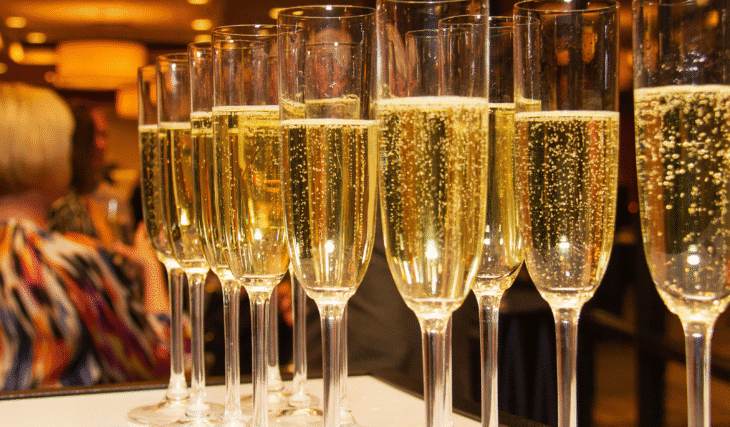The Role of Champagne in Celebrations Around the World: Traditions, Toasts, and Cultural Meaning
There are moments in life that call for something more. Not just more flavor or style, but more meaning. Across cultures and continents, when people gather to honor a milestone, mark a transition, or share a joyful memory, champagne is often the drink that accompanies it. Its sound signals attention. Its sparkle reflects emotion. Its ritual turns fleeting seconds into lasting memories.
Champagne has become more than a luxury item. It carries symbolism and ceremony. It represents abundance without excess, celebration without noise, and togetherness without instruction. Whether it appears in a palace hall, a family backyard, a religious gathering, or a sports arena, champagne carries the same message: something important is happening, and it deserves to be remembered.
Key Takeaways:
- From weddings to world championships, the most meaningful milestones often include champagne transforming ordinary toasts into memorable rituals that honor emotion, connection, and success
- Cultural traditions around the globe use champagne to express joy in different ways whether through sabrage, champagne towers, shared bottles, or personalized toasts that reflect community and intention
- Even small, personal celebrations are elevated with champagne marking birthdays, anniversaries, or new beginnings with a sense of elegance and purpose
- The style of champagne chosen can shape the tone of the occasion with Brut for versatility, Rosé for vibrancy, Vintage for depth, and Demi-Sec for sweetness and warmth
- It’s not just the taste, but the gesture of pouring champagne that makes it iconic signaling that a moment matters and deserves to be remembered with intention and flair
This is how champagne became the drink of celebration around the world—and why it continues to hold that place across generations and cultures.
1. Weddings: When Love Is Honored Publicly
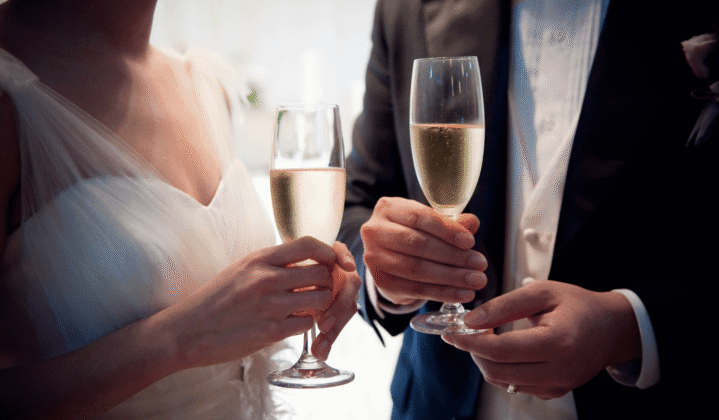
Weddings are filled with traditions that celebrate the start of a life together. Champagne brings a sensory dimension to that moment. Its golden color reflects warmth and prosperity, its rising bubbles suggest movement and excitement, and its presence turns a simple toast into a ceremonial highlight.
In France, champagne is not only poured but often arranged in towers, with each glass filled from the top down as a symbol of shared abundance. In Italy, magnum bottles are opened with dramatic flair during the reception, reinforcing the idea that love should be celebrated generously. In the United States and the United Kingdom, champagne flutes are handed to each guest as the couple is toasted, often during speeches or before the first dance.
Weddings in India, China, South Korea, and the Middle East are also incorporating champagne, particularly in cross-cultural or modernized ceremonies. Though traditional drinks may still be served, champagne often takes the spotlight during cocktail hours or reception toasts. It adds an international touch to a deeply personal celebration.
2. New Year’s Eve: Welcoming the Unknown with Sparkle
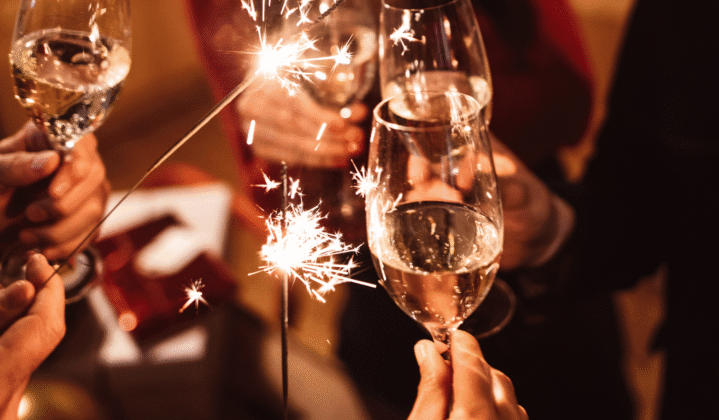
Few traditions are as universally shared as counting down to a new year. Champagne has become part of this ritual across much of the globe because it captures the emotional spirit of crossing from one chapter into the next. The cork is released, the bubbles rise, and people raise their glasses not only to celebrate the present but to welcome the possibilities ahead.
In New York and London, champagne is poured moments before midnight and sipped as fireworks light up the sky. In Brazil, people wear white and toast on the beach, watching the ocean as they set intentions for the year. In Tokyo and Seoul, younger generations toast with champagne in rooftop bars while still participating in more traditional ceremonies earlier in the evening.
What connects these moments is not the setting or the size of the celebration, but the feeling. Champagne becomes the bridge between what was and what is to come. It allows people to honor what they have lived while embracing what they have yet to experience.
3. Sporting Victories: The Taste of Triumph

The sight of an athlete lifting a bottle of champagne after a win is instantly iconic. Champagne has become synonymous with achievement because it turns celebration into spectacle. Its association with victory began in the world of motorsports, where winners on the podium began spraying champagne to share their joy with the crowd.
Today, that tradition lives on in Formula One, tennis championships, football leagues, and the Olympics. Athletes often open the bottle not to drink, but to mark the moment in a way that feels alive and physical. It becomes a part of the visual memory, captured in photos and video, replayed as a symbol of effort rewarded.
Even in local and amateur sports, champagne is often used during post-game gatherings, retirement events, or season closings. It honors not only the win but the journey it took to get there.
4. Business Success and Professional Achievements
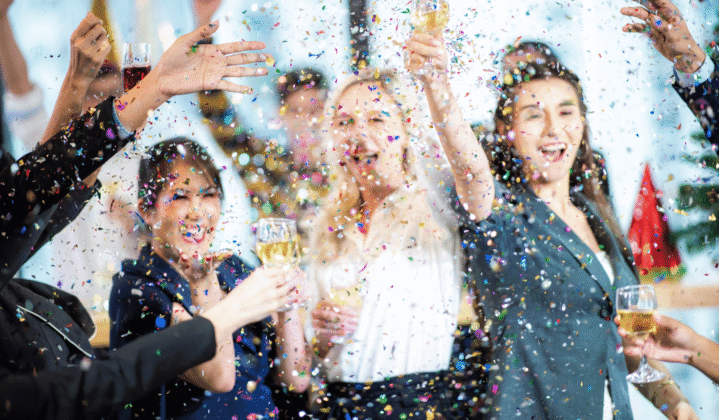
In boardrooms and office lounges, champagne is used to celebrate milestones that might otherwise pass quietly. Closing a major deal, launching a new company, receiving a promotion, or reaching a fundraising goal—each of these becomes more meaningful when acknowledged with intention.
In global business culture, champagne signals respect and appreciation. It creates a shared moment in environments that can often feel transactional. It reminds teams and leaders alike that progress is worth celebrating and that success is not just about numbers, but about people.
Some companies have gone further, incorporating champagne toasts into onboarding ceremonies, retirement parties, or annual reviews. It brings a sense of occasion to environments where it is easy to move on too quickly to the next goal.
5. Birthdays, Anniversaries, and Personal Milestones

Champagne is not reserved for public events or grand announcements. It is also poured for quiet victories and deeply personal celebrations. A birthday dinner at home, a couple’s tenth anniversary, a first apartment, a clean bill of health—all of these deserve recognition, and champagne often brings that sense of meaning to the moment.
In cities across Africa, champagne has become a popular choice for marking birthdays, new jobs, or promotions, especially among younger professionals. In Europe and North America, it is commonly used for engagements, housewarmings, or even a well-deserved weekend getaway.
Non-alcoholic versions of champagne and sparkling wines are now widely available as well, making these traditions more inclusive. The gesture remains the same. The bubbles rise. The glasses meet. A memory is made.
6. Festivals, Public Holidays, and National Celebrations
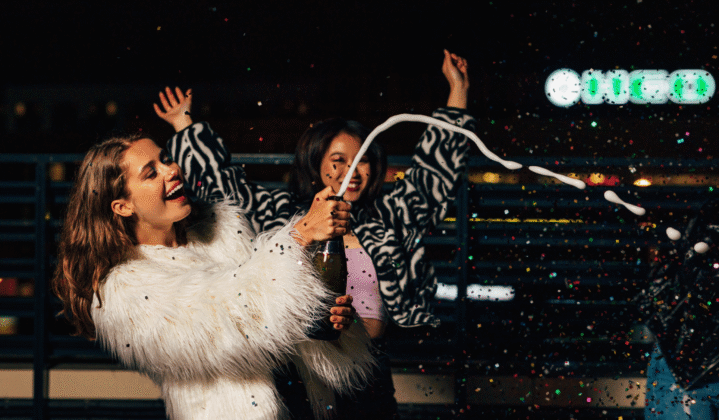
Public events and holidays often feature champagne as part of broader cultural practices. From Bastille Day in France to national days of independence or liberation across Europe and South America, champagne is used to mark shared pride and identity.
During the Cannes Film Festival and other major global awards events, champagne is the drink of choice not only because of its glamour but because it turns professional recognition into a personal moment. Guests raise their glasses to honor artistry, creativity, and excellence.
At cultural festivals like Carnival in Brazil or Diwali in Indian communities abroad, champagne may appear at private parties or VIP events, reflecting the fusion of tradition with modern tastes.
How Champagne Is Celebrated Around the World: Traditions, Gestures, and Serving Styles
Across the globe, champagne plays more than a supporting role in celebrations—it becomes part of the ceremony itself. The way people open, serve, and share champagne varies widely from one culture to another. These gestures aren’t just about visual flair. They reflect cultural values, symbolic meanings, and the desire to make joy a shared and memorable experience. Below are just a few of the unique ways champagne rituals are carried out around the world.
Sabrage in France and Italy
In France, the birthplace of champagne, and across parts of Italy, some celebrations begin with an act of bold theatricality. Known as sabrage, this technique involves opening a bottle with a saber, slicing cleanly across the lip of the bottle to remove the cork and collar in one swift motion. Traditionally associated with military victory and aristocratic ceremony, sabrage has been adopted at weddings, anniversaries, and luxury events as a dramatic and symbolic way to declare that the moment deserves attention. It is often performed by a designated guest or host, drawing cheers from the crowd and setting a tone of grandeur from the very first pour.
Champagne Towers at Luxury Celebrations
Few sights are as visually mesmerizing as a champagne tower. Built by stacking coupe glasses in a pyramid formation, the tower is carefully filled by pouring champagne from the topmost glass, allowing it to cascade into the levels below. This style of serving is popular at high-end weddings, royal receptions, and formal gala events, especially in places like the United Kingdom, France, and Southeast Asia. More than just a centerpiece, the flowing champagne represents abundance, prosperity, and the idea that joy should spill over and be shared with others.
Passing the Bottle Communally
In many African and Caribbean cultures, the experience of champagne is made more intimate and collective by sharing directly from the bottle. Instead of pouring individual servings into flutes or coupes, a single bottle may be passed from person to person, allowing each guest to take a sip before handing it on. This method reinforces the sense of unity, family, and communal blessing that lies at the heart of many traditional celebrations. It shifts the focus from presentation to participation, ensuring that every guest feels part of the moment.
Toast Circles in Eastern Europe
In Eastern European countries such as Poland, Ukraine, and Russia, toasting traditions are rich with structure and meaning. Rather than offering a single collective toast, events are often filled with multiple rounds of individual toasts, each dedicated to someone specific—friends, family, the host, the future, or even ancestors. Champagne is poured freshly between rounds, and sips are taken with respect, not haste. These toast circles are less about indulgence and more about presence, intention, and expressing gratitude.
Custom Engraving for Milestones
Champagne has also become part of personalized ritual. In both Western and Eastern countries, engraved bottles are now a popular way to mark individual achievements such as promotions, retirements, anniversaries, or brand launches. The engraving may feature names, dates, or even quotes, turning the bottle itself into a keepsake that is often displayed long after the last glass has been poured. It’s a modern practice that bridges tradition and customization, allowing people to celebrate in a way that feels uniquely their own.
Pouring Into Unexpected Vessels
Not every champagne moment is formal or perfectly planned. In many casual or offbeat celebrations—especially impromptu gatherings, backyard parties, or travel-based adventures—champagne may be poured into whatever is available. From tea cups and plastic tumblers to jars or even coconut shells, this relaxed approach reflects the idea that celebration is more about intention than perfection. It also speaks to champagne’s flexibility. Its presence signals importance, regardless of how it’s served.
Mixing into Signature Celebration Cocktails
In contemporary celebrations across cities like New York, Tokyo, Cape Town, and Sydney, champagne is often mixed into signature cocktails that bring local flavor into the mix. Drinks like the French 75, Kir Royale, or Aperol Spritz all highlight champagne or sparkling wine as a base. At weddings, birthday parties, and brunch events, customized champagne cocktails add variety while maintaining the drink’s celebratory spirit. In multicultural settings, these drinks often bridge cultural gaps by combining Western ingredients with local tastes.
Champagne Blessings in Modern Ceremonies
As ceremonies evolve, couples and families are finding new ways to include champagne in symbolic acts. One increasingly popular gesture is the “champagne blessing,” where two bottles are poured simultaneously into a shared glass. This is often used in weddings to symbolize unity, or in commitment ceremonies to represent the joining of two families. The act serves as a liquid metaphor for harmony, partnership, and mutual intention. It’s a quiet yet meaningful ritual that allows champagne to carry emotional weight beyond the toast.
These cultural and stylistic variations show that champagne is more than a beverage. It is part of how people elevate a moment, express connection, and make joy feel intentional. Whether poured with ceremony or shared without formality, champagne adapts to the tone of the celebration—bringing meaning to the moment in ways both grand and subtle. Its presence, in whatever form, signals that this is something to remember.
Choosing the Right Champagne for the Celebration
| Champagne Type | Profile & Characteristics | Commonly Used For |
| Brut Champagne | Dry, crisp, with balanced acidity. Most versatile and globally popular style. |
|
| Extra Brut / Brut Nature | Extremely dry with little to no added sugar. Refined and minimalist in style. |
|
| Rosé Champagne | Fruity, vibrant, and visually striking with a pink hue. |
|
| Vintage Champagne | Aged, complex, made from a single-year harvest. Full of character and depth. |
|
| Blanc de Blancs | Light, elegant, citrus-forward. Made from Chardonnay grapes only. |
|
| Blanc de Noirs | Rich, full-bodied. Made from Pinot Noir and/or Pinot Meunier. |
|
| Demi-Sec / Doux Champagne | Sweeter, rounder, with more residual sugar. Ideal for dessert or lighter palates. |
|
Why Champagne Remains the Drink of Celebration

Champagne’s role in celebration goes far beyond its taste or reputation. It is chosen because of how it feels—elevated, thoughtful, and full of intent. It turns an everyday moment into something worthy of memory, and a significant event into something unforgettable.
Its bubbles do not just rise—they lift the energy in the room. Its cork does not just pop—it announces something meaningful. And its glass does not just hold a beverage—it holds emotion, connection, and the sense that we are experiencing something together.
Around the world, champagne continues to be more than a drink. It is a signal that something important is happening. And it reminds us to stop, notice, and celebrate it fully.
